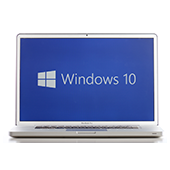Bluetooth users beware!
Published June 2, 2017
 Bluetooth technology helps simplify our daily lives — it allows for hands free communication, a quick and easy way to share content with friends, family, colleagues, and more. In fact, 45 percent of Americans have Bluetooth enabled across multiple devices. This raises the question: Does using Bluetooth leave our doors opened to hacker attacks?
Bluetooth technology helps simplify our daily lives — it allows for hands free communication, a quick and easy way to share content with friends, family, colleagues, and more. In fact, 45 percent of Americans have Bluetooth enabled across multiple devices. This raises the question: Does using Bluetooth leave our doors opened to hacker attacks?
 There’s a lot of buzz surrounding Google’s latest Android operating system known as “Android O.†Whether it will continue the trademark snack-theme name is yet to be confirmed, but what we do know is users can expect longer battery life and an improved notification system. Besides that, here are six other OS changes you don’t want to miss.
There’s a lot of buzz surrounding Google’s latest Android operating system known as “Android O.†Whether it will continue the trademark snack-theme name is yet to be confirmed, but what we do know is users can expect longer battery life and an improved notification system. Besides that, here are six other OS changes you don’t want to miss. Server and desktop virtualization have been improving computing efficiency and data security for years. But with all the talk about mobile BYOD policies and corporate data protection on smartphones, the National Security Agency (NSA) believes virtualization is the key to true security. Here’s what you need to know:
Server and desktop virtualization have been improving computing efficiency and data security for years. But with all the talk about mobile BYOD policies and corporate data protection on smartphones, the National Security Agency (NSA) believes virtualization is the key to true security. Here’s what you need to know: Amazon is setting its sights on the VoIP market again and will use its Alexa technology to launch a new phone system. Based on a new patent, users of Amazon’s artificial intelligence (AI) devices might soon be able to enjoy a smart speaker and phone in one. This won’t be the eCommerce giant’s first attempt at launching a wireless phone system, but this time it seems that they’re taking the time to develop the technology. Read on to find out more.
Amazon is setting its sights on the VoIP market again and will use its Alexa technology to launch a new phone system. Based on a new patent, users of Amazon’s artificial intelligence (AI) devices might soon be able to enjoy a smart speaker and phone in one. This won’t be the eCommerce giant’s first attempt at launching a wireless phone system, but this time it seems that they’re taking the time to develop the technology. Read on to find out more. For businesses, the security of sensitive data is critical. If this information is lost or stolen, it could lead to crippling financial losses, legal disputes, and more importantly, loss of customer trust. And while those of you with Microsoft Office 365 installed have some security and compliance tools, there are still some data protection best practices you need to consider. Here are seven of them:
For businesses, the security of sensitive data is critical. If this information is lost or stolen, it could lead to crippling financial losses, legal disputes, and more importantly, loss of customer trust. And while those of you with Microsoft Office 365 installed have some security and compliance tools, there are still some data protection best practices you need to consider. Here are seven of them: Windows 10’s Fall Creators Update is the next major update that Microsoft will roll out in September. Besides reusing the same “Creators Update” name and focusing on bringing the Windows experience to iOS and Android devices, here are some noteworthy features users can expect.
Windows 10’s Fall Creators Update is the next major update that Microsoft will roll out in September. Besides reusing the same “Creators Update” name and focusing on bringing the Windows experience to iOS and Android devices, here are some noteworthy features users can expect. No one can escape the news of WannaCry. The IT industry has been covering this type of malware for years, but never has one campaign spread so far or infected so many computers. Read on to gain a greater understanding of what happened and how to prepare yourself for the inevitable copy cats.
No one can escape the news of WannaCry. The IT industry has been covering this type of malware for years, but never has one campaign spread so far or infected so many computers. Read on to gain a greater understanding of what happened and how to prepare yourself for the inevitable copy cats. macOS version of HandBrake, an open-source video transcoding software that converts multimedia files into various formats, was recently infected with a Trojan. According to HandBreak’s announcement, if you downloaded the app between May 2 (14:30 UTC) and May 6 (11:00 UTC), there’s a 50% chance that your system got infected. Read on to find out more.
macOS version of HandBrake, an open-source video transcoding software that converts multimedia files into various formats, was recently infected with a Trojan. According to HandBreak’s announcement, if you downloaded the app between May 2 (14:30 UTC) and May 6 (11:00 UTC), there’s a 50% chance that your system got infected. Read on to find out more. Both businesses and individuals across dozens of countries are scrambling to fix their computer systems after a ransomware, named WannaCry, caused major disruptions earlier this month. Like most ransomware, WannaCry encrypts files and demands a Bitcoin payment for their release. What’s worse, more WannaCry variants will likely be developed in the near future, according to security researchers. Fortunately, there are some common strategies you can use to mitigate the damage of the ransomware.
Both businesses and individuals across dozens of countries are scrambling to fix their computer systems after a ransomware, named WannaCry, caused major disruptions earlier this month. Like most ransomware, WannaCry encrypts files and demands a Bitcoin payment for their release. What’s worse, more WannaCry variants will likely be developed in the near future, according to security researchers. Fortunately, there are some common strategies you can use to mitigate the damage of the ransomware. Cybersecurity didn’t become more important in light of the WannaCry ransomware epidemic, it just became more visible to the average internet user. If like so many others, you’re auditing the security of business’s software, web browsers are a great place to start. Learn more about how your browser choice stacks up in your security comparison.
Cybersecurity didn’t become more important in light of the WannaCry ransomware epidemic, it just became more visible to the average internet user. If like so many others, you’re auditing the security of business’s software, web browsers are a great place to start. Learn more about how your browser choice stacks up in your security comparison.


